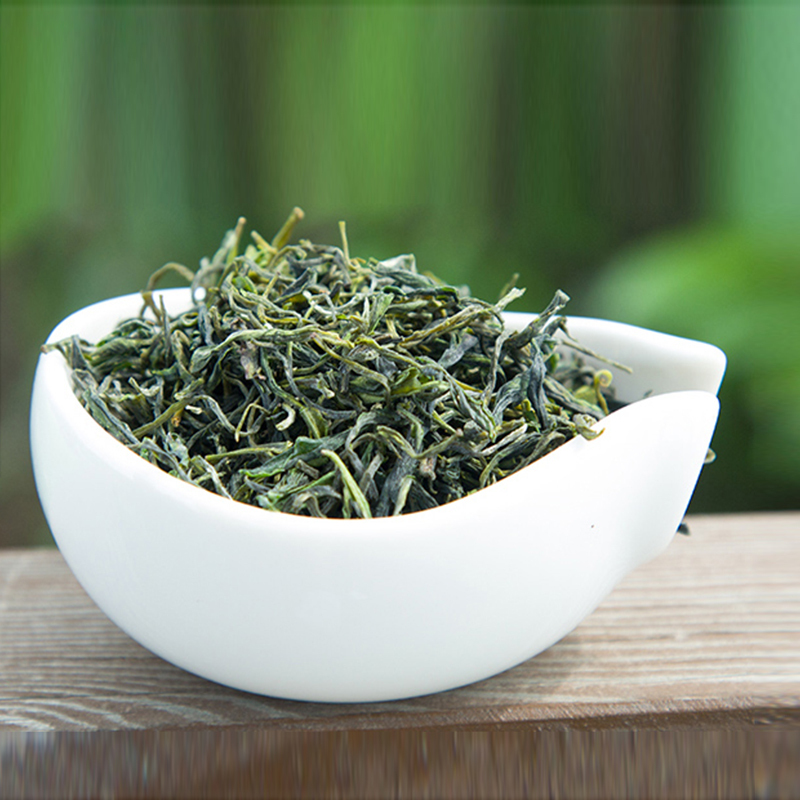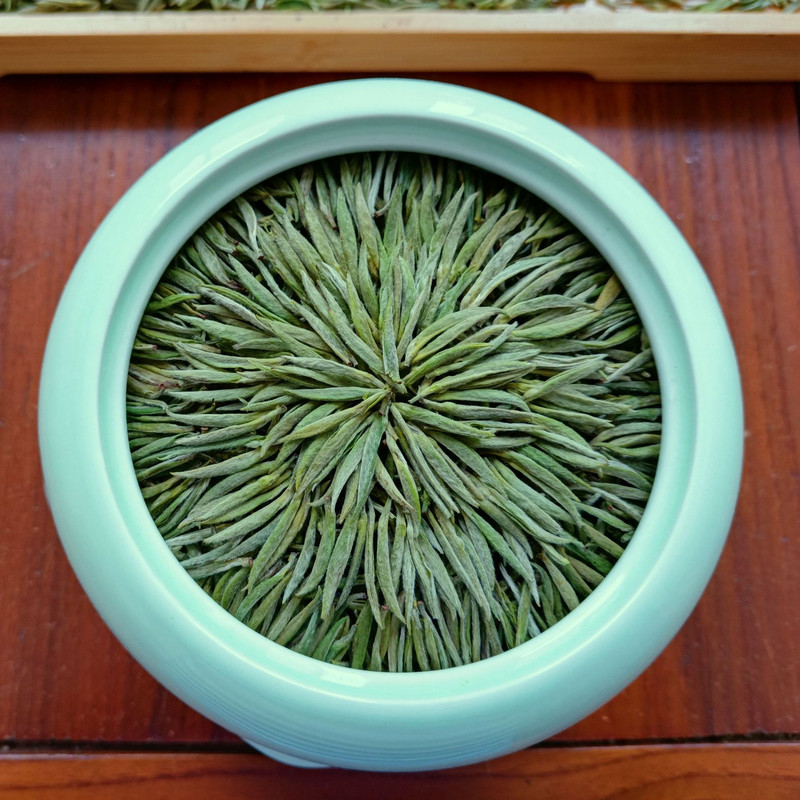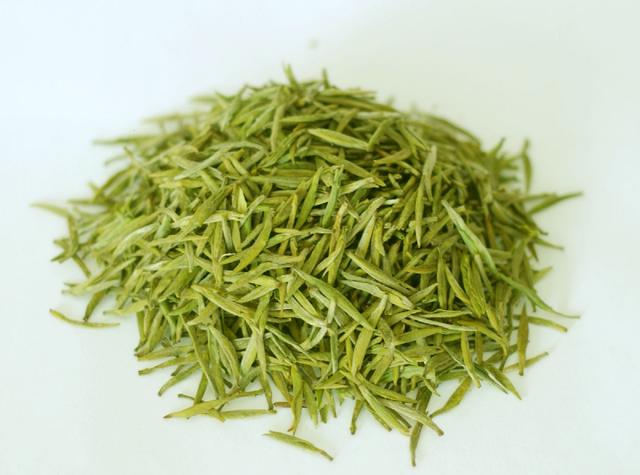Nestled in the mist-clad hills of Chizhou City, Anhui Province, 池州毛峰 (Chízhōu Máofēng) emerges as a timeless gem in China’s green tea pantheon. Celebrated for its downy buds, orchid-like fragrance, and centuries-old legacy, this tea embodies the essence of its birthplace—a region where ancient tea trails wind through bamboo forests and terraced gardens. Let us embark on a journey to uncover its history, terrain, and enduring allure.

Origins & Legendary Heritage
The story of Chizhou Maofeng begins in the Tang Dynasty, when tea merchants traversed the “Ancient Tea Horse Road” linking Anhui to the Silk Road. Legend has it that Buddhist monks from nearby Jiuhua Mountain cultivated this tea as an offering to emperors, dubbing it the “jade down of enlightenment.” The tea gained prominence during the Ming Dynasty, when it was immortalized in tea manuals for its “slender form and ethereal aroma.” Today, it remains a National Geographical Indication Product, a tribute to its unbroken lineage.
Terroir: Where Mist Meets Mineral-Rich Soil
The tea gardens of Chizhou occupy a UNESCO-designated biosphere reserve, where:
- Altitude: 600–1,000 meters above sea level, shrouded in year-round fog.
- Soil: Volcanic loam enriched by decaying bamboo leaves and mineral-rich bedrock.
- Climate: Cool temperatures, abundant rainfall, and sharp day-night temperature shifts.
These conditions, combined with pristine mountain springs, result in leaves of exceptional tenderness and aroma.
Craftsmanship: The Art of the Downy Bud
The production of Chizhou Maofeng is a meticulous dance of fire and hands:
- Plucking: Only the tender bud and one leaf are harvested in early spring, ensuring peak freshness.
- Withering: Leaves are spread on bamboo mats to reduce moisture gently.
- Fixation (Killing Green): Pan-fried in woks at 180–200°C to halt oxidation, preserving the tea’s vibrant color.
- Rolling: Leaves are shaped by hand into tight, needle-like curls, releasing essential oils.
- Drying: Final roasting over charcoal locks in aroma and enhances durability.
Aesthetic & Sensory Profile
When steeped, Chizhou Maofeng unveils its unique character:
- Appearance: Leaves unfurl into emerald needles covered in silvery down.
- Liquor: Bright golden-green hue, reminiscent of mountain springs.
- Aroma: Fresh orchid notes with hints of chestnut and wildflowers.
- Taste: Smooth, vegetal freshness transitions to a lingering sweetness, with a subtle umami finish.
Brewing Rituals
To honor its essence:
- Water: Use soft, spring water heated to 80–85°C (176–185°F).
- Ratio: 3 grams of tea per 150 ml (1:50 tea-to-water ratio).
- Vessel: Glass cup or porcelain gaiwan to admire the unfurling leaves.
- Infusion: First steep for 2 minutes; extend subsequent brews by 1 minute (up to 3 infusions).
Authenticity & Grading
Genuine Chizhou Maofeng is distinguished by:
- Appearance: Uniform, needle-like leaves covered in silvery down.
- Aroma: Fresh, floral fragrance with subtle smokiness.
- Liquor: Clear golden-green hue.
- Infused Leaves: Plump, emerald-green, and intact.
Graded into Superior, Premium, and Standard tiers based on leaf uniformity, pluck standard, and craftsmanship. Superior-grade tea, harvested before Qingming Festival, commands 150–300 per 100 grams, while Standard grades range from 60–150.
Healthful Alchemy
Rich in polyphenols, catechins, and vitamins, Chizhou Maofeng offers:
- Antioxidant Power: Combats free radicals linked to aging and cancer.
- Cardiovascular Support: Lowers cholesterol and improves blood circulation.
- Mental Clarity: L-theanine promotes focus without jitters.
- Digestive Aid: Historically used to alleviate bloating and improve metabolism.
Cultural Resonance
Beyond its cup, Chizhou Maofeng is woven into local folklore and wellness traditions. Monks at Jiuhua Mountain have long relied on its meditative properties, while poets have likened its aroma to “the breath of the forest gods.” Today, it remains a symbol of Anhui’s ecological heritage, a bridge between wilderness and civilization.
In every sip of Chizhou Maofeng, one encounters not just a tea, but the spirit of China’s sacred mountains—a tribute to the harmony between humanity and the wild.



